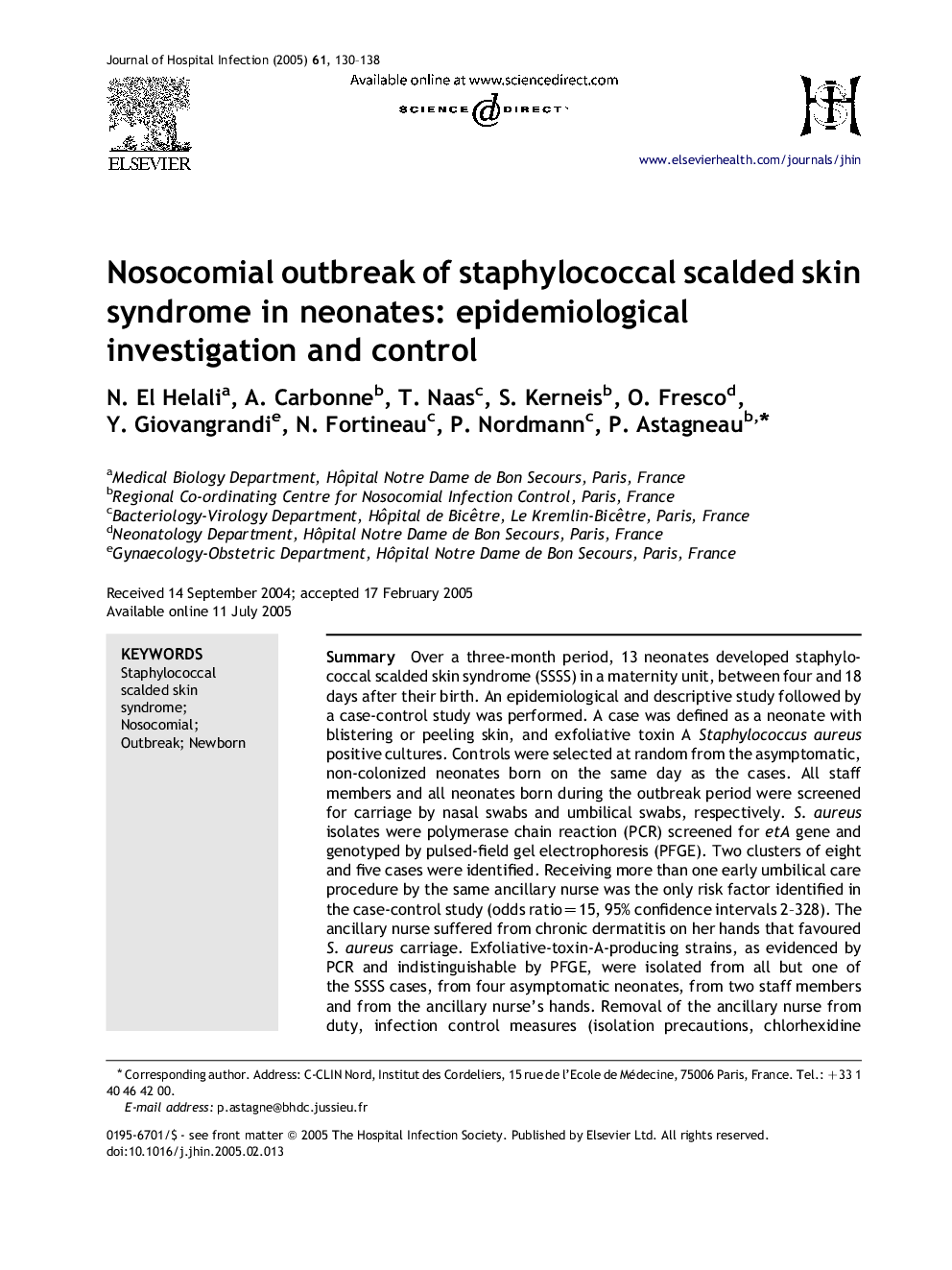| کد مقاله | کد نشریه | سال انتشار | مقاله انگلیسی | نسخه تمام متن |
|---|---|---|---|---|
| 9269193 | 1219327 | 2005 | 9 صفحه PDF | دانلود رایگان |
عنوان انگلیسی مقاله ISI
Nosocomial outbreak of staphylococcal scalded skin syndrome in neonates: epidemiological investigation and control
دانلود مقاله + سفارش ترجمه
دانلود مقاله ISI انگلیسی
رایگان برای ایرانیان
کلمات کلیدی
موضوعات مرتبط
علوم زیستی و بیوفناوری
ایمنی شناسی و میکروب شناسی
میکروبیولوژی و بیوتکنولوژی کاربردی
پیش نمایش صفحه اول مقاله

چکیده انگلیسی
Over a three-month period, 13 neonates developed staphylococcal scalded skin syndrome (SSSS) in a maternity unit, between four and 18 days after their birth. An epidemiological and descriptive study followed by a case-control study was performed. A case was defined as a neonate with blistering or peeling skin, and exfoliative toxin A Staphylococcus aureus positive cultures. Controls were selected at random from the asymptomatic, non-colonized neonates born on the same day as the cases. All staff members and all neonates born during the outbreak period were screened for carriage by nasal swabs and umbilical swabs, respectively. S. aureus isolates were polymerase chain reaction (PCR) screened for etA gene and genotyped by pulsed-field gel electrophoresis (PFGE). Two clusters of eight and five cases were identified. Receiving more than one early umbilical care procedure by the same ancillary nurse was the only risk factor identified in the case-control study (odds ratio=15, 95% confidence intervals 2-328). The ancillary nurse suffered from chronic dermatitis on her hands that favoured S. aureus carriage. Exfoliative-toxin-A-producing strains, as evidenced by PCR and indistinguishable by PFGE, were isolated from all but one of the SSSS cases, from four asymptomatic neonates, from two staff members and from the ancillary nurse's hands. Removal of the ancillary nurse from duty, infection control measures (isolation precautions, chlorhexidine handwashing and barrier protections), and treatment of the carriers (nasal mupirocin and chlorhexidine showers) led to control of the epidemic. In conclusion, this study emphasizes the need for tight surveillance of chronic dermatitis in healthcare workers.
ناشر
Database: Elsevier - ScienceDirect (ساینس دایرکت)
Journal: Journal of Hospital Infection - Volume 61, Issue 2, October 2005, Pages 130-138
Journal: Journal of Hospital Infection - Volume 61, Issue 2, October 2005, Pages 130-138
نویسندگان
N. El Helali, A. Carbonne, T. Naas, S. Kerneis, O. Fresco, Y. Giovangrandi, N. Fortineau, P. Nordmann, P. Astagneau,